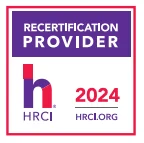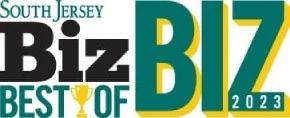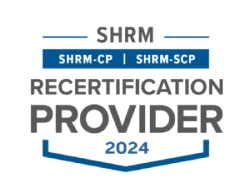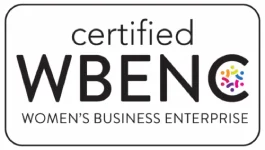Upcoming Challenges with ACA in 2021

Upcoming Challenges with ACA in 2021
IRS Eliminates Transition Relief and Removes Threshold Expanding Eligibility
In previous year, the IRS has provided relief of penalties to reporting entities that report incomplete or incorrect information as long as these entities can show they made a good-faith effort to comply with the information reporting requirements. In late 2020, the IRS released Notice 2020-76, which among other things, provided for a good-faith waiver for 2020 ACA Reporting to apply to missing and inaccurate taxpayer identification numbers and birthdates, as well as other information. Unfortunately, in this same Notice the IRS states: “As this good-faith relief was intended to be transitional relief, this is the last year the Treasury Department and the IRS intend to provide this relief.” However, the IRS did renew their request for comments related to furnishing requirements under 6055 and 6056 of the ACA regulations. They further state: “Unless we receive comments that explain why this relief continues to be necessary, no relief … will be granted in future years.” The comments were due by Feb 1, 2021.
What this could mean for employers is that if they have been somewhat complacent about the employee and dependent data they utilized for their ACA reporting in the past, it is time to audit and check for accuracy on all employee and dependent information including spelling of names, social security numbers, and birthdates.
Another new development is the changes made under the American Rescue Plan in which, until now, only individuals who made less than 400 percent of the federal poverty level (FPL) were eligible to receive a subsidy. Now, the Plan expands eligibility by eliminating the 400 percent FPL income cap for tax years 2021 and 2022. The legislation does not change the sliding scale nature of PTCs. But, for 2021 and 2022, it reduces the premium percentage at all income levels (above 100 percent FPL). Those with incomes from 100 to 150 percent FPL are eligible for no-premium coverage (i.e., they contribute no income towards premiums for a silver benchmark plan).
The premium contribution increases as income increases but is ultimately capped at no more than 8.5 percent of income for those with higher incomes (including those with income above 400 percent FPL). These levels are not indexed to increase annually for two years, meaning the percentages (e.g., 0 percent to 8.5 percent) will remain the same for both 2021 and 2022.
With the threshold removed on the marketplace, more individuals will likely qualify for subsidies, which makes it all the more critical that employers who are Applicable Large Employers and required to abide by ACA regulations, offer coverage that meets Minimum Value, Minimum Essential Coverage and most importantly offer premiums that are considered affordable under current ACA Guidelines, which has not changed. The affordability threshold for 2021 remains at 9.83% for 2021.
However, because of the potential increased IRS scrutiny, coupled with the subsidy expansions under the ARP, it may lead to additional employer penalty letters and notices from the IRS.
Penalty A&B
For the 2021 tax year, the annual ACA Employer Mandate penalties under 4980H(a) and 4980H(b) will be $2,700 and $4,060, respectively.
With more individuals receiving subsidies on the marketplace, there will be a greater chance for B penalties to be assessed by the IRS, even if the employer did offer affordable coverage. Currently, the B penalty is currently at $4060 (2021) and assessed per month for each employee whose health coverage offer was not affordable for that month.
As previously mentioned, the employer’s “affordability” is calculated differently. Employers have an option to choose one or more affordability safe harbors available to them: 1. The premium amount is less than 9.83% of the Federal Poverty Level for 2021, 2. The rate of pay, which is the employee’s lowest rate of pay during the year multiplied by 130 hours (per the IRS) and then multiplied by 9.83%, and, 3. The W2 Box 1 earnings multiplied by 9.83% divided by the number of months the employee was eligible for health benefits. Safe harbors were established because, as the law is written, the ACA determines affordability based on a taxpayer’s total household income which can be difficult for an employer to obtain. Safe harbor protections can be applied differently to various populations and may need to be re-evaluated when a population has worked substantially fewer hours or experienced a reduction in pay if certain conditions are met.
Action Steps You Can Take Now:** **
Calculate if you are an Applicable Large Employer & Employee Eligibility
- To determine whether your organization is required to report means looking at your full-time staff as well as the number of part-time staffers and combining those two groups to determine whether the organization qualifies as an Applicable Large Employer. Innovative Benefit planning can assist in this calculation.
- Measuring eligibility of employees who work variable or seasonal schedules is not an easy task. COVID-19 has ignited more complexity’s due to furloughs, reduced hours and pay, layoffs and more.
Know Safe Harbor Protections:
Safe harbor protections can be applied differently to various populations and may need to be re-evaluated when a population has worked substantially fewer hours or experienced a reduction in pay under certain conditions. Please see above for safe harbor calculations for 2021.
Communication with Key Employees
Educate key personnel regarding the ACA changes so that you do not incur additional penalties. The more who know about the new updates, the safer your organization is from an audit. Complying with ACA reporting obligations can be complex, confusing and time-consuming, especially as new rules and regulations come into play during the largest workplace upheaval in recent history. It is important for employers to be informed about ACA, tax, and legal solutions so they do not incur penalties or end up incurring unnecessary costs. Our staff is highly trained in all ACA procedures and laws. It is more important now more than ever to hire a partner who is highly trained and skilled to ensure you file on time and avoid penalties and or fines.
We would be more than happy to answer any questions you might have pertaining to this announcement. Please feel free to contact your account team, or email us at icomply@ibpllc.com.
This Compliance communication is not intended to be exhaustive nor should any discussion or opinions be construed as legal advice. Readers should contact legal counsel for legal advice.
For a downloadable PDF, click here.
Categories
Archive







